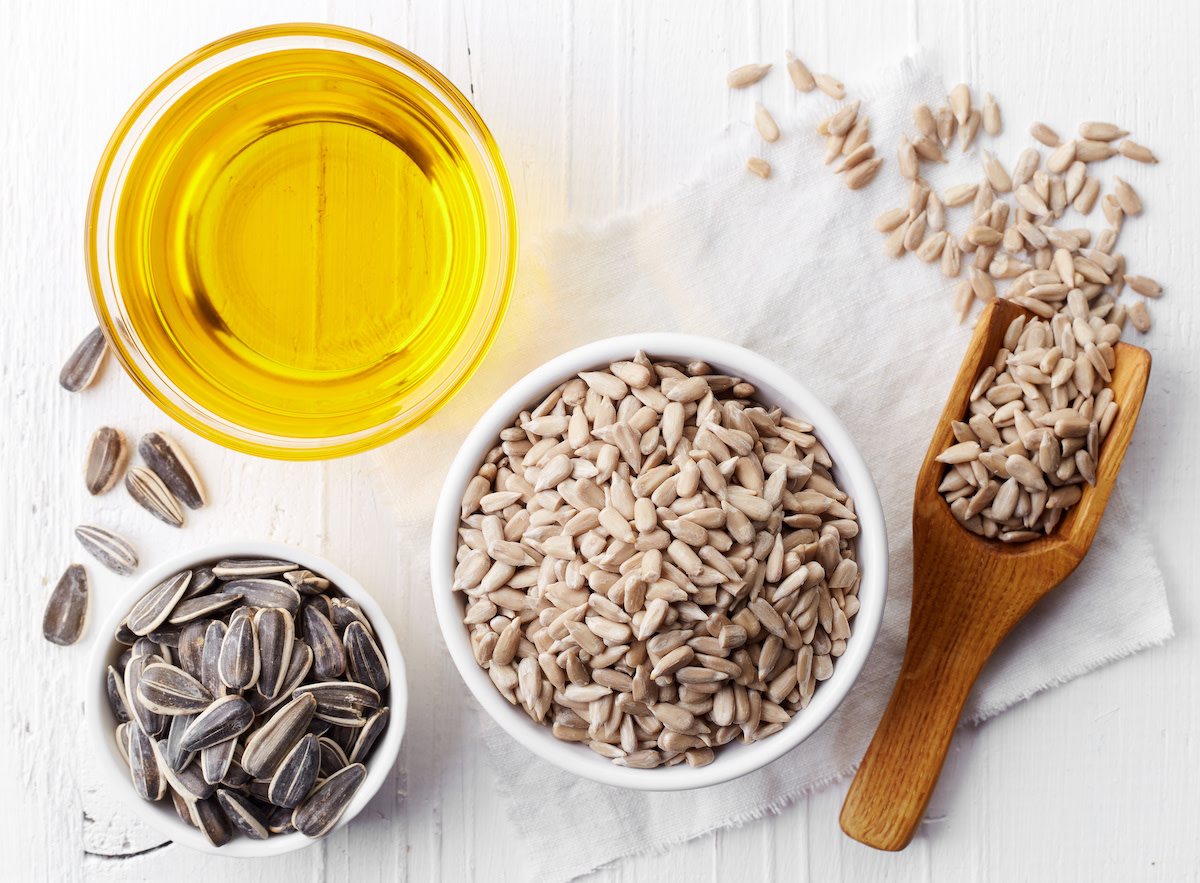What Is Sunflower Oil? A Guide to Cooking With Sunflower Oil
Written by MasterClass
Last updated: Aug 4, 2021 • 3 min read
Sunflower oil, pressed from the seeds of the sunflower plant, has been popular in Eastern Europe for decades, but is only recently gaining attention in the US.
What Is Sunflower Oil?
Like most vegetable oils, sunflower oil, which is extracted from sunflower seeds, is available in both refined (neutral-tasting) and cold-pressed (buttery, nutty) forms. Cold-pressed, unrefined sunflower oil is harder to find in the US and best saved for vinaigrettes and other low-heat applications that can show off its flavors, while refined sunflower oil’s high smoke point (440 to 475°F) make it a solid choice for high-heat applications like frying and sautéeing.
Learn From the Best
Where Does Sunflower Oil Come From?
Sunflowers are native to the American southwest and were a source of fat for Native Americans, who boiled the seeds to extract their oil. Sunflower seeds, which contain 35 to 45 percent fat, are not really seeds at all: they're small fruits, similar to those found on a strawberry.
A Brief History of Sunflower Oil
Sunflower seed oil is especially popular in Russia, where it arrived after the in the eighteenth century via Europe. It became a popular substitute for butter and lard, both of which were prohibited during Lent by the Russian Orthodox Church. By the nineteenth century, sunflowers were a major crop in Russia and Ukraine. It's still the principal cooking oil in Russia, the world's leading producer of sunflower oil.
In its native North America, sunflower oil was dominated by cheaper corn and soybean oils, which were often hydrogenated (aka trans fat!) to make them more stable in processed foods, like potato chips. In the ‘70s, health-conscious Americans turned to sunflower oil because of its high percentage of polyunsaturated fats (59 to 62 percent), believing it reduced cholesterol and the risk of heart disease. And in the ’90s, when we learned about the dangers of trans fats, potato chip producers switched to sunflower oil en masse, beginning a sunflower-oil renaissance.
What Are the Health Benefits of Sunflower Oil?
Sunflower oil naturally has a high proportion of polyunsaturated fats that contain essential fatty acids, like linoleic acid, an omega-6 fatty acid with a zigzag structure, which is better for cholesterol levels than the straight-shaped saturated fats—making it a good choice for heart health and preventing cardiovascular disease. It also contains vitamin E, but the oil’s antioxidant properties tend to break down during cooking (even more so than olive oil, with its lower smoke point!), decreasing its potential health benefits.
How Healthy Is Sunflower Oil Compared With Other Oils?
Sunflower oil contains about 13 percent saturated fat, which is more than grapeseed oil, canola oil, and safflower oils, but less than coconut oil, palm oil, cottonseed oil, peanut oil, and soybean oils. It has the same amount of saturated fat as olive and corn oil.
Unrefined sunflower oil has vitamin E and should be consumed raw to take advantage of its benefits. High-oleic sunflower oil is a type of oil that contains more monounsaturated fats than polyunsaturated fats. Currently there’s little evidence to suggest that monounsaturated fats are healthier than polyunsaturated, but they do tend to be a little more stable.
What Are the Culinary Uses for Sunflower Oil?
Refined sunflower oil can be used in place of any neutral vegetable oil, for searing, sautéeing, frying, and more. Use unrefined sunflower oil as you would extra-virgin olive oil, such as in salad dressing.
Can You Fry With Sunflower Oil?
Sunflower oil’s smoke point is high enough that it’s suitable for frying and other high-heat applications. Like all unsaturated oils, sunflower oil is unstable and tends to break down with prolonged heating.
4 Recipe Ideas Using Sunflower Oil
- Pyrizhky: Ukrainian stuffed savory donuts. Use refined sunflower oil in three different ways: as a component of the milk- and yeast-based dough; for sautéing fillings such as potato and onion or chicken hearts and livers; and for shallow-frying the donuts.
- Mayonnaise: Try refined sunflower oil for a neutral-flavored mayonnaise.
- Stuffed Zucchini Blossoms: Shallow-fried ricotta-stuffed blossoms in refined sunflower oil.
- Vinaigrette: If you find unrefined sunflower oil, try using it as a vinaigrette for a nuttier flavor than the typical olive oil.
Learn more cooking techniques in Chef Gordon Ramsay’s MasterClass.
